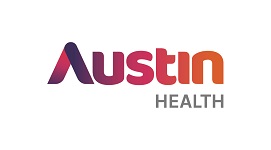Please use this identifier to cite or link to this item:
https://ahro.austin.org.au/austinjspui/handle/1/26451Full metadata record
| DC Field | Value | Language |
|---|---|---|
| dc.contributor.author | Gottlieb, Elie | - |
| dc.contributor.author | Khlif, Mohamed S | - |
| dc.contributor.author | Bird, Laura | - |
| dc.contributor.author | Werden, Emilio | - |
| dc.contributor.author | Churchward, Thomas J | - |
| dc.contributor.author | Pase, Matthew P | - |
| dc.contributor.author | Egorova, Natalia | - |
| dc.contributor.author | Howard, Mark E | - |
| dc.contributor.author | Brodtmann, Amy | - |
| dc.date | 2021-04-15 | - |
| dc.date.accessioned | 2021-05-17T05:47:00Z | - |
| dc.date.available | 2021-05-17T05:47:00Z | - |
| dc.date.issued | 2021-04-15 | - |
| dc.identifier.citation | Sleep Medicine 2021; 83: 45-53 | en |
| dc.identifier.uri | https://ahro.austin.org.au/austinjspui/handle/1/26451 | - |
| dc.description.abstract | Sleep-wake dysfunction is bidirectionally associated with the incidence and evolution of acute stroke. It remains unclear whether sleep disturbances are transient post-stroke or are potentially enduring sequelae in chronic stroke. Here, we characterize sleep architectural dysfunction, sleep-respiratory parameters, and hemispheric sleep in ischemic stroke patients in the chronic recovery phase compared to healthy controls. Radiologically confirmed ischemic stroke patients (n = 28) and matched control participants (n = 16) were tested with ambulatory polysomnography, bi-hemispheric sleep EEG, and demographic, stroke-severity, mood, and sleep-circadian questionnaires. Twenty-eight stroke patients (22 men; mean age = 69.61 ± 7.4 years) were cross-sectionally evaluated 4.1 ± 0.9 years after mild-moderate ischemic stroke (baseline NIHSS: 3.0 ± 2.0). Fifty-seven percent of stroke patients (n = 16) exhibited undiagnosed moderate-to-severe obstructive sleep apnea (apnea-hypopnea index >15). Despite no difference in total sleep or wake after sleep onset, stroke patients had reduced slow-wave sleep time (66.25 min vs 99.26 min, p = 0.02), increased time in non-rapid-eye-movement (NREM) stages 1-2 (NREM-1: 48.43 vs 28.95, p = 0.03; NREM-2: 142.61 vs 115.87, p = 0.02), and a higher arousal index (21.46 vs 14.43, p = 0.03) when compared to controls. Controlling for sleep apnea severity did not attenuate the magnitude of sleep architectural differences between groups (NREM 1-3=ηp2 >0.07). We observed no differences in ipsilesionally versus contralesionally scored sleep architecture. Fifty-seven percent of chronic stroke patients had undiagnosed moderate-severe obstructive sleep apnea and reduced slow-wave sleep with potentially compensatory increases in NREM 1-2 sleep relative to controls. Formal sleep studies are warranted after stroke, even in the absence of self-reported history of sleep-wake pathology. | en |
| dc.language.iso | eng | |
| dc.subject | Brain ischemia | en |
| dc.subject | Polysomnography | en |
| dc.subject | Sleep apnea | en |
| dc.subject | Sleep architecture | en |
| dc.subject | Stroke | en |
| dc.title | Sleep architectural dysfunction and undiagnosed obstructive sleep apnea after chronic ischemic stroke. | en |
| dc.type | Journal Article | en |
| dc.identifier.journaltitle | Sleep Medicine | en |
| dc.identifier.affiliation | Harvard T.H. Chan School of Public Health, Harvard University, MA, USA | en |
| dc.identifier.affiliation | Melbourne School of Psychological Sciences, University of Melbourne, Melbourne, VIC, Australia | en |
| dc.identifier.affiliation | Turner Institute for Brain and Mental Health, School of Psychological Sciences, Monash University, VIC, Australia | en |
| dc.identifier.affiliation | The Florey Institute of Neuroscience and Mental Health, Melbourne, VIC, Australia | en |
| dc.identifier.affiliation | University of Melbourne, Melbourne, VIC, Australia | en |
| dc.identifier.affiliation | Institute for Breathing and Sleep | en |
| dc.identifier.affiliation | Austin Health | en |
| dc.identifier.doi | 10.1016/j.sleep.2021.04.011 | en |
| dc.type.content | Text | en |
| dc.identifier.pubmedid | 33991892 | |
| local.name.researcher | Bird, Laura | |
| item.languageiso639-1 | en | - |
| item.fulltext | No Fulltext | - |
| item.cerifentitytype | Publications | - |
| item.openairecristype | http://purl.org/coar/resource_type/c_18cf | - |
| item.openairetype | Journal Article | - |
| item.grantfulltext | none | - |
| crisitem.author.dept | The Florey Institute of Neuroscience and Mental Health | - |
| crisitem.author.dept | The Florey Institute of Neuroscience and Mental Health | - |
| crisitem.author.dept | Institute for Breathing and Sleep | - |
| crisitem.author.dept | Institute for Breathing and Sleep | - |
| crisitem.author.dept | The Florey Institute of Neuroscience and Mental Health | - |
| Appears in Collections: | Journal articles | |
Items in AHRO are protected by copyright, with all rights reserved, unless otherwise indicated.
